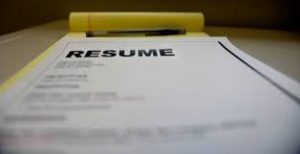Alright ya’ll, I’m here to get back to the basics! This time I’m talking about resumes. As a Student Outreach Coordinator at Aureus Medical, I speak to students on a weekly basis about the do’s and don’ts on building a resume. I’m not going to lie; there are SO many opinions and tips about resumes. I’m never going to say my perspective is the best or correct for everyone out there. I will say that I typically take the more traditional route. Soak in all the information or choose to only take bits and pieces. Whatever it may be, I hope you find this beneficial the next time you need to revamp your resume!
 What’s your Objective?
What’s your Objective?
The first step to building a resume is to simply determine why you are building your resume in the first place. Are you just coming out of school looking for your first position? Looking for a career change? Or, just browsing at other opportunities that might fit your current skill set? Whichever it is, it’s good to determine what areas on your resume to highlight.
The format and content included really depends on why you’re building a resume and the type of job you’re applying to. For example, as a new grad, you want to highlight the skills you developed in school. This could include fieldwork rotations, internships, or a part time job. If it’s relevant work experience, it’s pertinent information that should be included. Briefly describe the skills you developed and make sure to highlight those skills that will be transferable to the job you’re applying to.
What to Include and What Not to Include
No need to add every single skill and job you’ve ever had. Your goal when building a resume is to highlight your skills you can take into the job you’re specifically applying to. Include only relevant experience that will make you a strong candidate for the job. Don’t limit yourself. It’s your turn to show them what you’ve got! Embrace it!!
Hint Hint…Read the job description for the job you’re applying to a few times to make sure you know exactly what they’re looking for! You can also use valuable keywords found in the job description throughout your resume.
Here are the main sections you should always include on your resume:
- Name & Contact info
- Education
- Professional/Relevant Experience (Using reverse chronological order & including dates worked)
- Licenses/Certifications/Awards/Memberships
- Transferable Skills
Social Media Presence
LinkedIn, Twitter, Facebook, or Instagram can all be used for professional marketing and networking. If you have a professional social media account, feel free to add it next to your contact information! Having a link readily available to any hiring manager will allow them to get to know you and likely leave a great impression!
Do not link any accounts to your resume that are not professional! Although your personal account may seem okay, you don’t want to leave the wrong impression to a potential employer.
 Errors!
Errors!
Spelling, grammatical, and formatting errors can be easily missed. They are also a great way to get your resume thrown in the trash can. No worries, you can prevent this from happening! Having somebody else look over your resume is a MUST! It can be a family member, friend, or coworker. Whomever you ask, make sure they carefully examine your full resume and request any feedback. Having more than one person look it over is even better. The more feedback you get, the more ideas you have to make it even more powerful!
Remember to keep it simple! Use easy to read fonts, 10-12 point font size, and have a reasonable amount of white space. If you choose to use graphics, keep it tasteful. Make it easy on the eyes! The most important information on your resume is your experience and what value you can bring to the table. Adding unnecessary fillers can sometimes hide exclusive information. Hiring managers spend a limited amount of time on each resume, so it’s important to get in as much info into a small amount of space and not look too cluttered.
A few common mistakes I see on a resume include:
- Misspellings
- Long sentences instead of short paraphrased bullet points
- Education and work experience not in reverse chronological order
- Hard to read font
- 3-5 pages (you’re not writing a book about yourself!)
- Missing sections or unorganized format
These are only a few mistakes I typically see. Your resume is usually the only determinant for whether or not you will move on to the interview process. Take your time and add value!
If you have any questions or would like another set of eyes to look over your resume, our Student Outreach Team would be happy to take a quick look at it! 🙂
What is your biggest obstacle when building a resume? Comment below or PM me and I’d be glad to help you overcome it!
Brooke Seeba is a Student Outreach Coordinator for the Student Outreach division of Aureus Medical Group.


Hi! My name is Anna Thomas and I am seriously considering a travel position as an MRI Technologist. I would need to
update my resume, I haven’t done so in years. I have over 18 years of MRI experience. I have worked at a Level 1 Trauma
Center for approximately 16 years. Also, I have outpatient experience.